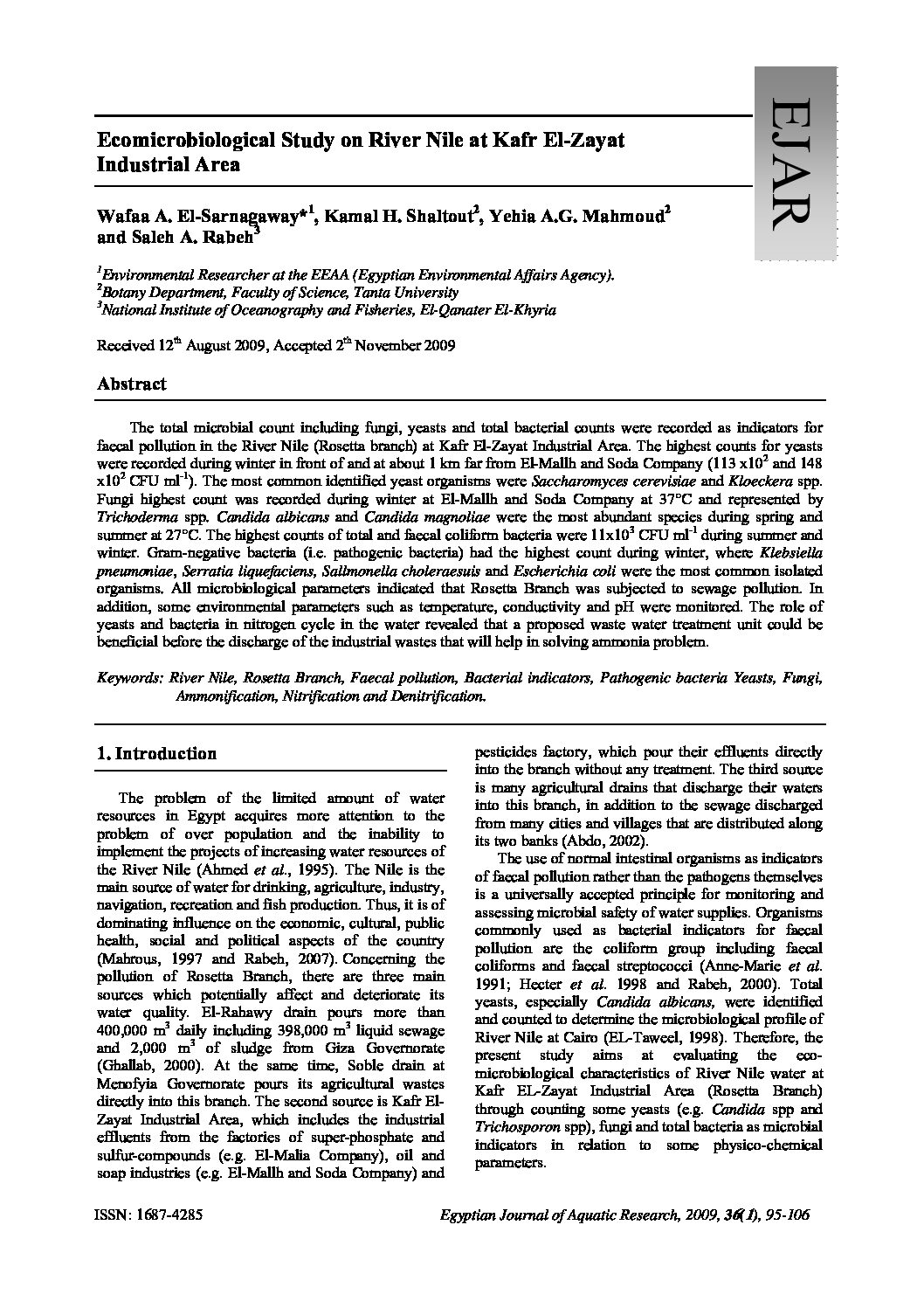Categories
vol-36Ecomicrobiological Study on River Nile at Kafr El-Zayat
Industrial Area
Wafaa A. El-Sarnagaway*1
, Kamal H. Shaltout2
, Yehia A.G. Mahmoud2
and Saleh A. Rabeh3
1
Environmental Researcher at the EEAA (Egyptian Environmental Affairs Agency). 2
Botany Department, Faculty of Science, Tanta University
3
National Institute of Oceanography and Fisheries, El-Qanater El-Khyria
Received 12th August 2009, Accepted 2th November 2009
Abstract
The total microbial count including fungi, yeasts and total bacterial counts were recorded as indicators for
faecal pollution in the River Nile (Rosetta branch) at Kafr El-Zayat Industrial Area. The highest counts for yeasts
were recorded during winter in front of and at about 1 km far from El-Mallh and Soda Company (113 x102
and 148
x102 CFU ml-1). The most common identified yeast organisms were Saccharomyces cerevisiae and Kloeckera spp.
Fungi highest count was recorded during winter at El-Mallh and Soda Company at 37°C and represented by
Trichoderma spp. Candida albicans and Candida magnoliae were the most abundant species during spring and
summer at 27°C. The highest counts of total and faecal coliform bacteria were 11×103
CFU ml-1 during summer and
winter. Gram-negative bacteria (i.e. pathogenic bacteria) had the highest count during winter, where Klebsiella
pneumoniae, Serratia liquefaciens, Sallmonella choleraesuis and Escherichia coli were the most common isolated
organisms. All microbiological parameters indicated that Rosetta Branch was subjected to sewage pollution. In
addition, some environmental parameters such as temperature, conductivity and pH were monitored. The role of
yeasts and bacteria in nitrogen cycle in the water revealed that a proposed waste water treatment unit could be
beneficial before the discharge of the industrial wastes that will help in solving ammonia problem.
Keywords: River Nile, Rosetta Branch, Faecal pollution, Bacterial indicators, Pathogenic bacteria Yeasts, Fungi,
Ammonification, Nitrification and Denitrification.







